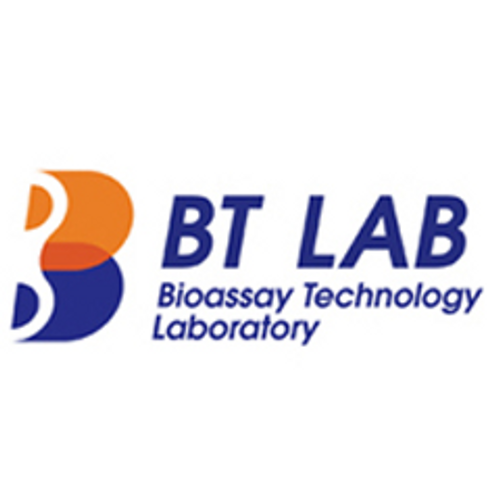Product Description
Human Protamine-1 (PRM1) ELISA Kit | AE25879HU | Abebio
Species Reactivity: Human (Homo sapiens)
Abbreviation: PRM1
Alternative Name: CT94.1; P1; cancer/testis antigen family 94; member 1|sperm protamine P1|testis specific protamine 1
Application: ELISA
Range: 0.156-10 ng/mL
Sensitivity: 0.056 ng/mL
Intra-Assay: ≤6.9%
Inter-Assay: ≤8.9%
Recovery: 1, 01
Sample Type: Serum, Plasma, Other biological fluids
Detection Method: Sandwich
Analysis Method : Quantitive
Test Principale: This assay employs a two-site sandwich ELISA to quantitate PRM1 in samples. An antibody specific for PRM1 has been pre-coated onto a microplate. Standards and samples are pipetted into the wells and anyPRM1 present is bound by the immobilized antibody. After removing any unbound substances, a biotin-conjugated antibody specific for PRM1 is added to the wells. After washing, Streptavidin conjugated Horseradish Peroxidase (HRP) is added to the wells. Following a wash to remove any unbound avidin-enzyme reagent, a substrate solution is added to the wells and color develops in proportion to the amount of PRM1 bound in the initial step. The color development is stopped and the intensity of the color is measured.
Product Overview: Protamines are small, arginine-rich, nuclear proteins that replace histones late in the haploid phase of spermatogenesis and are believed essential for sperm head condensation and DNA stabilization. Mice, humans, and certain fish have 2 or more different protamines, whereas the sperm of bull, boar, rat, rabbit, guinea pig, and ram have one form of protamine. The 2 human protamines are denoted P1 and P2 (PRM2) . PRM1 and PRM2 have a single intron, consisting of 91 and 163 bp, respectively. Both genes were found to contain typical TATAA and CAAT boxes at conventional distances from the transcription start points which, by use of primary extension experiments, were assigned to nucleotides -91 and -110 for PRM1 and PRM2, respectively.
Stability: The stability of ELISA kit is determined by the loss rate of activity. The loss rate of this kit is less than 5% within the expiration date under appropriate storage condition. The loss rate was determined by accelerated thermal degradation test. Keep the kit at 37°C for 4 and 7 days, and compare O.D.values of the kit kept at 37°C with that of at recommended temperature. (referring from China Biological Products Standard, which was calculated by the Arrhenius equation. For ELISA kit, 4 days storage at 37°C can be considered as 6 months at 2 - 8°C, which means 7 days at 37°C equaling 12 months at 2 - 8°C) .
 Euro
Euro
 USD
USD
 British Pound
British Pound
 NULL
NULL








